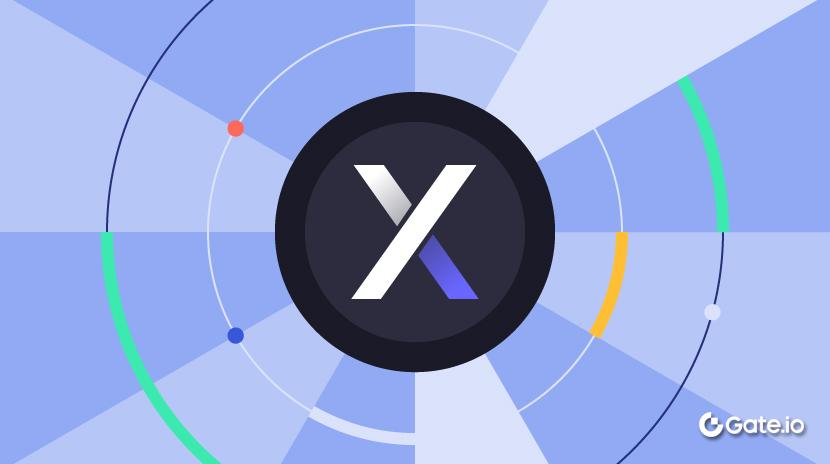Perang Saudara Ekosistem Solana: Apakah LaunchLab di Balik Lonjakan 65% RAY—dan Membunuh Pump.fun?
1. LaunchLab: Dari Pertahanan Ekosistem hingga Rekonstruksi Nilai

Pada 16 April 2025, DEX terkemuka Solana, Raydium, memposting di Twitter untuk memperkenalkan platform penerbitan token baru mereka, LaunchLab, menandakan persaingan sengit dengan mantan sekutu Pump.fun.
Dibandingkan dengan pendekatan yang disederhanakan oleh Pump.fun, LaunchLab Raydium menawarkan proses penciptaan token yang lebih canggih. Platform peluncuran baru ini memungkinkan pengembang untuk menyesuaikan pasokan token total, menentukan berapa banyak token yang dijual melalui kurva ikatan, dan menetapkan target penggalangan dana dalam SOL sebelum memindahkan likuiditas ke AMM Raydium. LaunchLab juga menawarkan fitur-fitur seperti penahanan token dan biaya migrasi bersama.
Langkah ini bukan hanya serangan balik yang kuat terhadap peluncuran terbaru Pump.fun dari AMM miliknya (PumpSwap), tetapi juga sinyal jelas dari pergeseran paradigma dalam ekosistem Solana—dari “berbagi lalu lintas” menjadi “penangkapan nilai.”
1. Latar Belakang: Persaingan Kekuasaan dalam Ekosistem Solana
Selama setahun terakhir, Pump.fun mendominasi peluncuran token di Solana, menyumbang 75% dari semua penerbitan token dengan memanfaatkan model "peluncuran tanpa kode + migrasi likuiditas instan". Namun, Pump.fun sangat mengandalkan Raydium sebagai kolam likuiditas pasar sekunder, menciptakan hubungan simbiotik yang rapuh. Data menunjukkan token Pump.fun menyumbang sekitar 35% dari pendapatan biaya perdagangan Raydium, sebuah ketergantungan yang cepat terurai begitu Pump.fun meluncurkan AMM miliknya sendiri, PumpSwap.
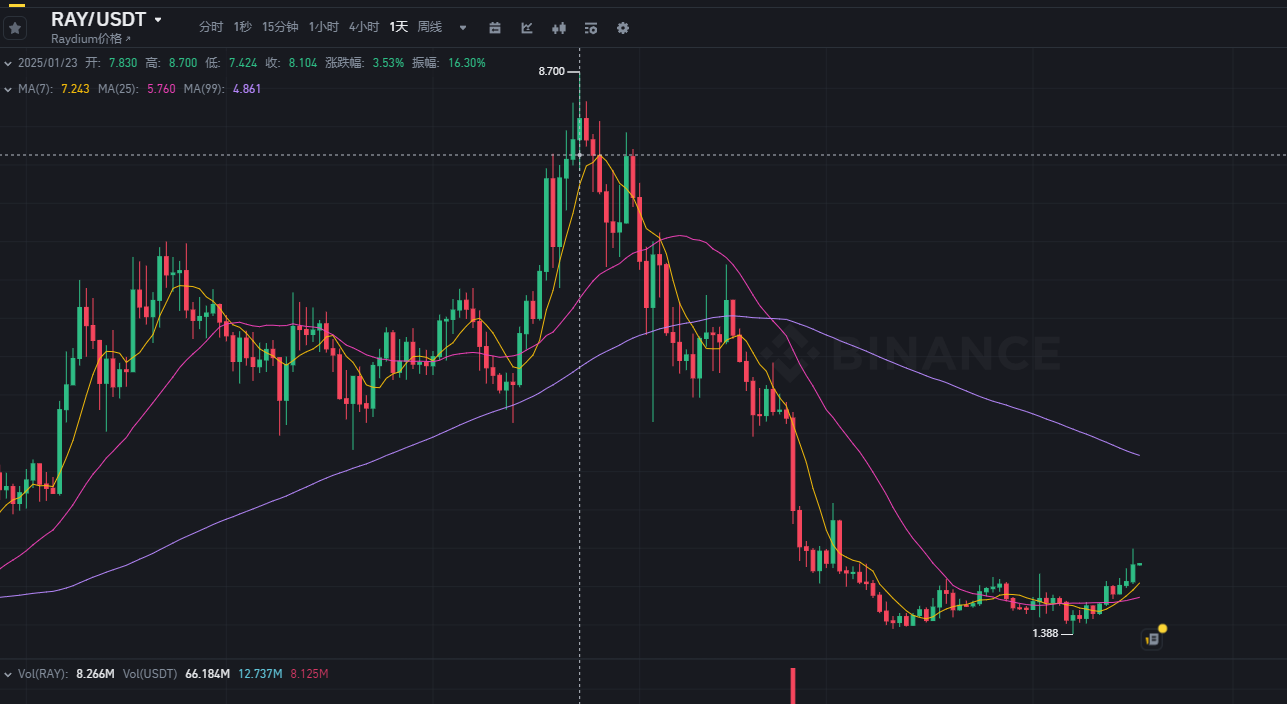
Seiring dengan meredupnya kegilaan koin meme Solana baru-baru ini, token asli Raydium, RAY, jatuh dari level tertinggi Januari sebesar $8.70 menjadi hanya $1.40—penurunan lebih dari 83%.
Oleh karena itu, peluncuran LaunchLab mewakili mekanisme pertahanan strategis Raydium: dengan membangun ekosistem dari peluncuran token hingga perdagangan, protokol bertujuan untuk mencegah sekitar $12 juta pendapatan tahunan bocor dan mendefinisikan ulang distribusi nilai dalam ekosistem Solana.
2. Arsitektur Teknis: Inovasi di Luar AMM Tradisional
Berbeda dengan model kurva pengikatan linier tunggal Pump.fun, LaunchLab menggunakan matriks kurva pengikatan dinamis, mendukung model harga linier, eksponensial, dan logaritmik.
Tim anonim Raydium, yang dikenal sebagai Tom, menyatakan: "Misi LaunchLab adalah memperbaiki model token yang cacat yang bergantung pada bursa terpusat dan market maker. Kami percaya bahwa penerbitan token akan terus dipercepat—dan kami ingin pertumbuhan itu terjadi di Solana."

Uji on-chain menunjukkan bahwa model kurva ikatan eksponensial mencapai kedalaman perdagangan 2,3 kali lipat rata-rata industri dalam minggu pertamanya dan meningkatkan efisiensi penemuan harga sebesar 28%. Inovasi teknologi intinya termasuk:
- Mesin Likuiditas Hibrid: Langsung terhubung dengan TVL Raydium yang ada sebesar $870 juta, mencocokkan modal secara real-time dan mengurangi periode cold-start untuk proyek-proyek baru dari 72 jam menjadi hanya 9 jam.
- Lapisan Biaya Pintar: Mengimplementasikan struktur biaya dinamis—biaya penerbitan dasar (0,5–1,8%), insentif likuiditas (12–25%), dan dana pengembangan ekosistem (1–3%)—untuk menciptakan lingkaran umpan balik positif antara tim proyek, pedagang, dan platform.
- Mekanisme Anti-Rug Pull: Memanfaatkan kontrak penitipan dana berjenjang, mengurangi risiko penipuan hingga 18% dari rata-rata historis. Insentif kunci likuiditas LP juga meningkatkan tingkat retensi likuiditas 30-hari menjadi 59%.
2. LaunchLab vs. Pump.fun: Keunggulan Kompetitif Multi-Dimensional
1. Kinerja Teknis: Keunggulan Asli Solana
Sebagai protokol asli Solana, LaunchLab memiliki keunggulan signifikan dalam kecepatan transaksi (waktu konfirmasi 580ms) dan biaya gas (0.00015 SOL per transaksi), jauh melampaui platform berbasis Ethereum. Uji coba dunia nyata menunjukkan bahwa di bawah beban jaringan tinggi, LaunchLab memiliki tingkat transaksi gagal hanya 0.7%, dibandingkan dengan 4.3% untuk Pump.fun. Di dunia perdagangan koin meme yang tinggi volatilitas, kesenjangan kinerja ini membentuk parit kompetitif yang substansial.
2. Model Ekonomi: Ekosistem Berkelanjutan dengan Tiga Insentif

LaunchLab menciptakan mekanisme “Burn & Earn” yang memungkinkan tim proyek untuk mengunci token LP secara permanen dan menerima sebagian dari biaya perdagangan. Gabungan dengan pembagian pendapatan biaya kreator sebesar 10%, desain ini mengubah tokenomika dari “peluncuran sekali dan selesai” menjadi penangkapan nilai berkelanjutan. Dibandingkan dengan tingkat biaya tetap 0,25% Pump.fun, model dinamis LaunchLab meningkatkan pendapatan total proyek sebesar 37% untuk peluncuran berkualitas tinggi.
3. Pengalaman Pengguna: Revolusi Peluncuran “JustSendIt”
Alur peluncuran yang sangat sederhana "JustSendIt" adalah fitur andalan LaunchLab:
- Penciptaan Token: Tidak memerlukan pemrograman—proyek mengonfigurasi pasokan, tipe kurva, dan lainnya melalui antarmuka visual.
- Penggalangan Dana: Target ditetapkan pada 85 SOL (~$12,000), mendukung kontribusi multi-aset.
- Migrasi Otomatis: Begitu tujuan pendanaan tercapai, likuiditas secara instan disuntikkan ke AMM Raydium—tanpa biaya migrasi 6 SOL.
- Manajemen Pendapatan: Kunci LP menghasilkan biaya perdagangan, dengan dukungan untuk vesting dan delegasi dompet.
Pengalaman 'peluncuran-ke-perdagangan' ini memampatkan siklus penayangan koin meme dari rata-rata industri 48 jam menjadi selesai secara instan.
3. Dampak Ekosistem: Menggambar Ulang Peta Nilai Solana
1. Peningkatan Struktural ke Platform Raydium
- Dengan mengintegrasikan likuiditas hibrid CLOB + DEX, LaunchLab telah meningkatkan tingkat konversi TVL Raydium menjadi 83%, peningkatan 21 poin dibanding era Pump.fun.

- Diversifikasi Sumber Pendapatan: Model pembagian biaya (50% untuk kolam komunitas, 25% untuk pembelian kembali RAY, 25% untuk kas protocol) telah mengubah RAY dari token tata kelola sederhana menjadi aset penangkap nilai.

- Aktivasi Ekosistem Pengembang: Dengan rilis antarmuka kustomisasi UI pihak ketiga, 10 tim—termasuk GMGN dan BullX—telah mulai membangun aplikasi vertikal di atas LaunchLab, menandakan munculnya ekosistem sinergis.
2. Restrukturisasi Nilai Token RAY

Peluncuran LaunchLab memicu lonjakan harga RAY dari titik terendah $1,39 menjadi $2,30, kenaikan 65%. Narasi nilai di balik RAY secara mendasar telah berubah:
- Mekanisme Deflasi: 25% dari biaya protokol bulanan digunakan untuk membeli kembali dan membakar RAY, dengan perkiraan tingkat deflasi tahunan sebesar 8–12%.
- Hasil Staking: Para pengunci LP tidak hanya menerima bagian dari biaya perdagangan tetapi juga mendapatkan imbalan staking RAY, dengan perkiraan APY antara 15–20%.
- Kekuatan Tata Kelola: Pemegang token dapat memberikan suara pada parameter-parameter kunci LaunchLab seperti struktur biaya dan jenis kurva ikatan, meningkatkan utilitas dan pengaruh.
Panduan Pengguna: Bagaimana Cara Berpartisipasi dalam Ekosistem LaunchLab
1. Panduan Peluncuran Token Cepat
- Mengunjungi https://raydium.io/launchpaddan hubungkan dompet Phantom Anda.
- Pilih mode “JustSendIt”, kemudian masukkan nama token, simbol, dan total pasokan Anda.
- Pilih jenis kurva ikatan (kurva eksponensial disarankan) dan tetapkan tujuan penggalangan dana Anda (default: 85 SOL).
- Bayar biaya gas sekitar 0.15 SOL untuk melakukan deploy.
- Pantau kemajuan penggalangan dana secara real-time; setelah tujuan tercapai, likuiditas secara otomatis dialihkan ke pasangan perdagangan Raydium.
2. Cara Memindai dan Berdagang di Raydium
Tautan peluncuran: https://raydium.io/launchpad
Setelah berada di situs, cari alamat kontrak token (CA).

Setelah menghubungkan dompet Anda (pojok kanan atas), sesuaikan slippage, masukkan jumlah pembelian, dan setujui transaksi di dompet Anda untuk melakukan perdagangan.

Kesimpulan: Sebuah Tatanan Baru dalam Ekosistem Solana
Peluncuran LaunchLab bukan hanya pertarungan antara Raydium dan Pump.fun—ini adalah momen penting yang menandai evolusi Solana dari pertumbuhan yang kacau menjadi pengembangan terstruktur. Saat penerbitan koin meme diselipkan dengan inovasi teknis, rasionalitas ekonomi, dan tata kelola komunitas, pemenang dari “perang likuiditas” ini pada akhirnya mungkin seluruh industri blockchain, menandakan jalannya menuju kedewasaan.
Seperti yang diungkapkan oleh pengembang inti anonim Raydium: "Apa yang kami coba perbaiki adalah pasar yang distorsi yang terlalu bergantung pada pembuat pasar terpusat. Solana ditakdirkan untuk menjadi dasar dari internet nilai."
Disclaimer:
Artikel ini diambil dari [MarsBit]. Hak cipta dimiliki oleh penulis asli [Alvis]. Jika Anda memiliki keberatan terhadap pemutarbalikan, harap hubungi Gate Belajartim. Tim akan menanganinya secepat mungkin sesuai dengan prosedur yang relevan.
Penafian: Pandangan dan pendapat yang diungkapkan dalam artikel ini hanya mewakili pandangan pribadi penulis dan tidak merupakan saran investasi apa pun.
Versi bahasa lain dari artikel diterjemahkan oleh tim Gate Learn. Artikel yang diterjemahkan tidak boleh disalin, didistribusikan, atau diplagiat tanpa menyebutkan Gate.
Artikel Terkait
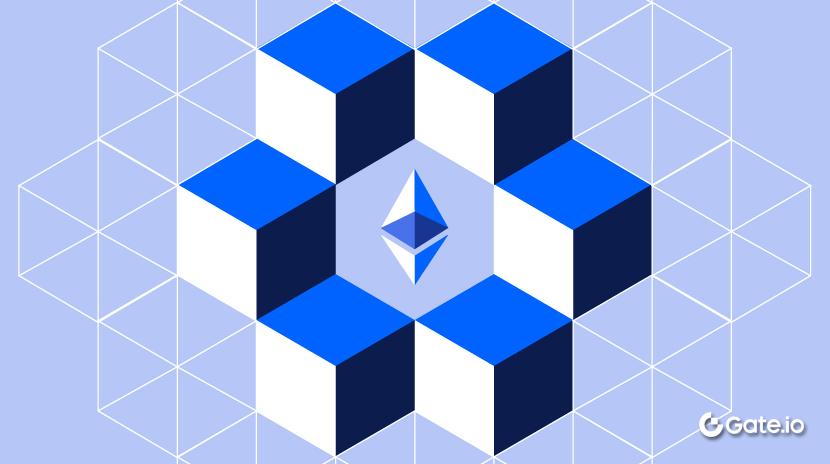
Bagaimana Mempertaruhkan ETH?
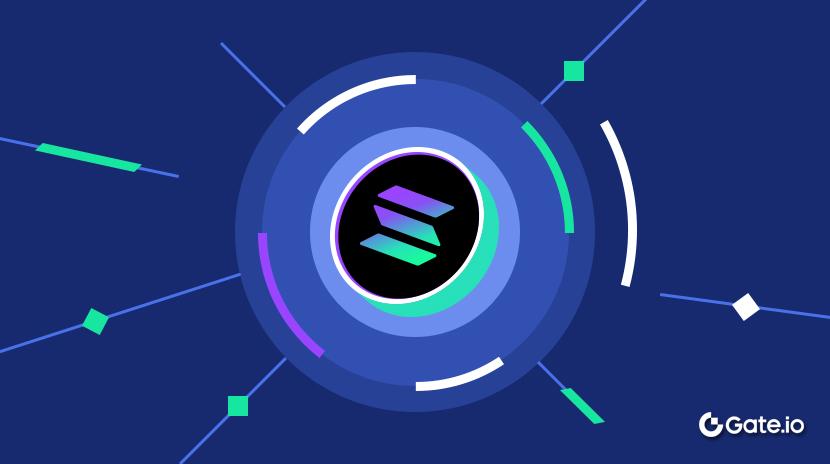
Apa itu Solana?
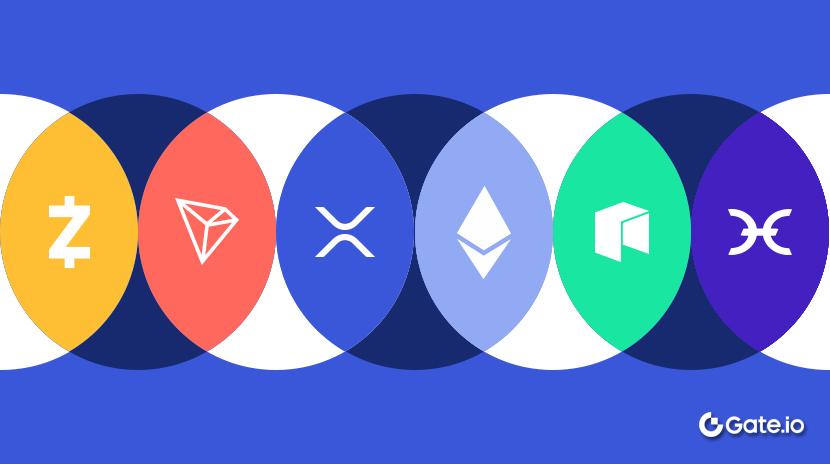
Apa itu Altcoin?
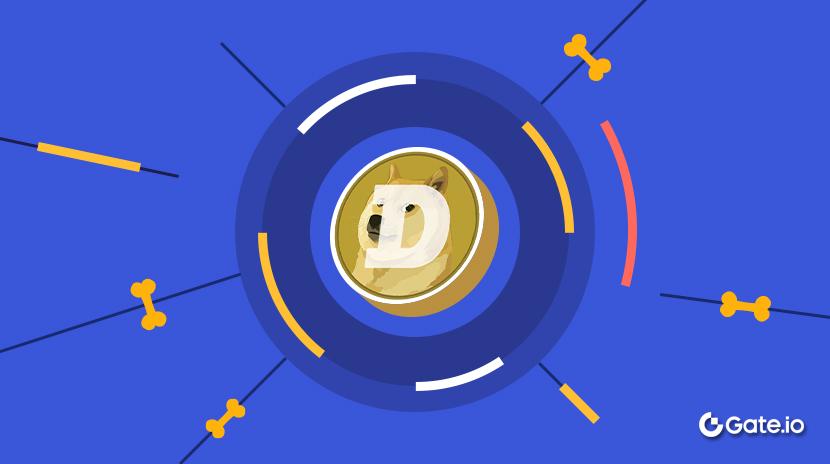
Apa itu Dogecoin?
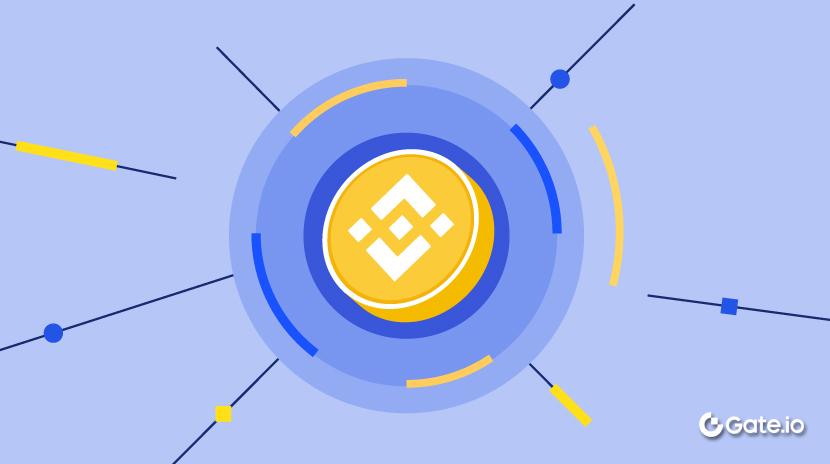
Apa itu BNB?
